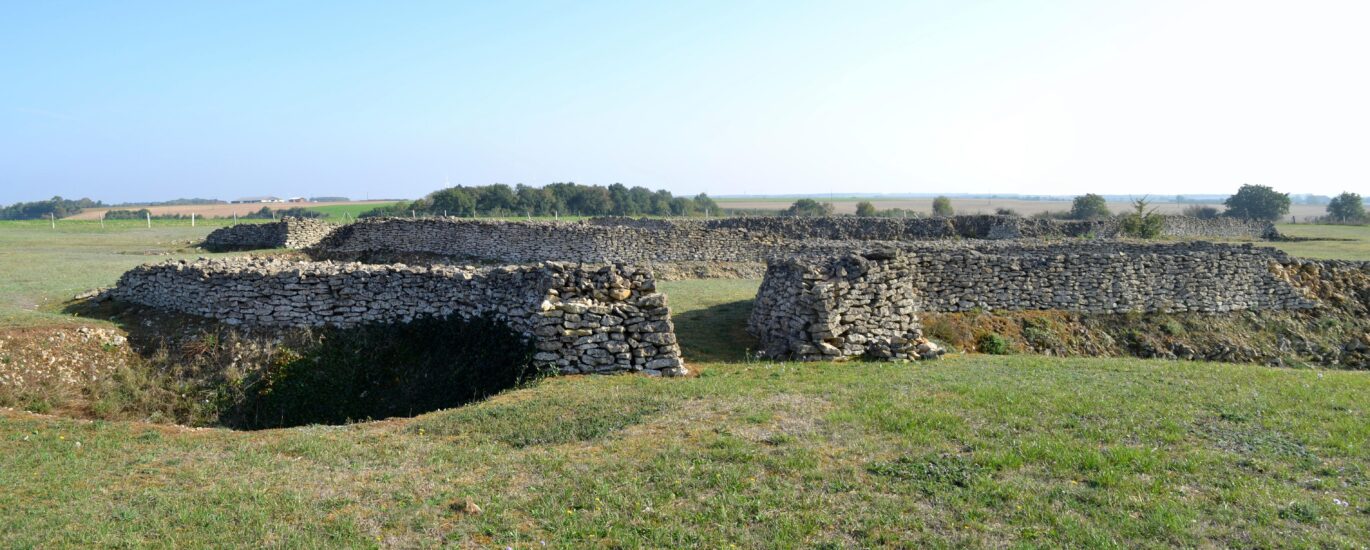Welcome to the Enceinte préhistorique de Champ-Durand, an intriguing archaeological site nestled in the charming commune of Nieul-sur-l’Autise in the Vendée department of France. Let us take you on a journey back in time to discover the mysteries of this ancient place.
Champ-Durand dates back to the late Neolithic period and was occupied until the early Bronze Age. Discovered in 1971 by Maurice Marsac through aerial photography, the site was extensively excavated between 1975 and 1985 under the direction of Roger Joussaume. It was declared a historic monument in 1990, emphasizing its significance in understanding prehistoric life.
The site is remarkable for its triple enclosure, forming an almost circular area with a diameter of about 250 meters, covering nearly two hectares. It overlooks the dry valley of Maléons, not far from the Marais poitevin, a region known for its unique landscapes. The enclosures are made up of three parallel ditches, each consisting of a series of pits separated by interruptions, suggesting the presence of gates or barriers. These ditches, totaling 1.5 kilometers in length, were a massive undertaking achieved with the use of deer antler picks, some of which were found during the excavations.
The inner ditch, carved into limestone, is the widest and deepest, measuring between 5 to 7 meters in width and 2.3 to 2.6 meters in depth. The subsequent ditches decrease in size, with the outermost being only 3 meters wide and 1.8 meters deep. Originally, the ditches were reinforced with stone walls, hinting at the site’s defensive purposes. Over time, the enclosures were modified for various functional needs, including the addition of palisades during the Early Bronze Age.
Interestingly, Champ-Durand was associated with the Peu-Richard culture, and the site served multiple roles over the centuries. Excavations revealed human remains primarily in the second ditch, possibly indicating its use as a burial site. The presence of eight bodies, some showing signs of trauma, suggests ritualistic or conflict-related burials. Archaeologists also unearthed polished axes, flint daggers, and pottery fragments, offering a glimpse into the daily lives of its ancient inhabitants.
The evolution of Champ-Durand from a fortified settlement to an archaeological treasure provides a fascinating insight into prehistoric society’s adaptation and innovation. As you explore this site, imagine the bustling life that once thrived here, the echoes of which still linger in the stones and soil of Champ-Durand.





